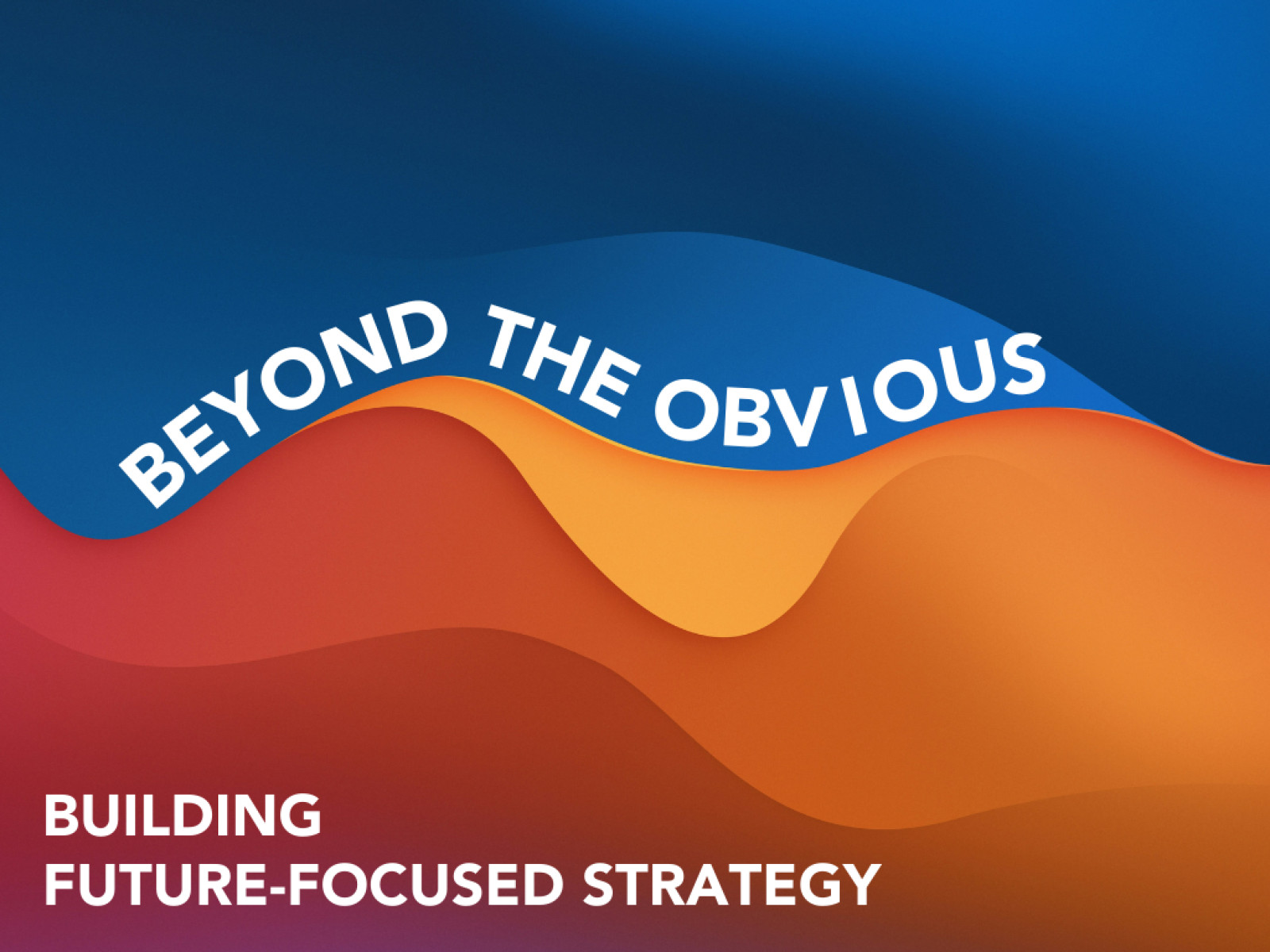Beyond the obvious: Building future-focused strategy


Business strategy has long been demarcated across sustaining and disruptive innovation. In the digital realm, the latter has had the upper hand, but now, as digital enters a slower growth phase, sustaining innovation is back in favour. Yet, this is also a period of dramatic value chain shifts, and is therefore exactly the period when companies should be pursuing disruptive, future-focused strategy instead. Future-focused strategy is a strategy superpower, the way to plot a path that few others have seen. And, in what will be a decade of disruption and change, it has never been more important.
Strategy takes many forms, from functional to conceptual, and the differing ways it is pursued both define and reflect companies’ cultures. The ideal outcome of strategy is to remain on the front foot, setting the agenda rather than following it. However, at some stage or another, all companies find themselves having to react rather than act and to follow rather than lead. Though the catalysts are most often external factors (e.g., changing marketing conditions, responding to competitor activity), the effectiveness of a company’s response, and even the frequency with which it is forced into response-mode, are shaped by its underlying strategy. In a sense, this exemplifies good strategy by continuously keeping up with market dynamics and being prepared to implement new initiatives – i.e., combining strategy and execution into one concerted effort.
Ever wondered why some companies seem to be less prone to responsiveness? Beyond the usual culprits of uncertainty, complacency, and resistant culture, this often occurs because those companies build strategies that prioritise long term objectives, even if that means limiting the potential of current products and revenue, sometimes even hastening their decline. This is future-focused strategy. However, to be effective, the approach requires operational capabilities that go far beyond a slick slide deck. It often requires a laser-focused leadership team overseeing a company culture that revolves around innovation, risk taking, and challenging accepted wisdoms.
All industries have companies that set the narrative with market-shaping strategy. The rule particularly applies to digital entertainment because: a) it is in relatively early stages, and b) it is shaped by technology. The companies that have set the pace in digital entertainment have most often been those with future-focused strategies, initiatives that were put into motion before full market fit was present. Here are some examples:
So, how do successful companies spot what lies ahead when others cannot? A common strategy failing is to try to emulate other companies’ success. This approach focuses on the effect of the other company’s strategy rather than the causal principles that underpin it. Future-focused strategy entails a similar thought process to that employed by chess grandmasters, visualising the game board with multiple potential future moves and counter moves. It requires looking beyond the current trend or challenge, by mapping out future multiple-order consequences. Through the process of identifying multiple knock-on effects, a company can build a future-focused strategy that not only plans ahead of the competition but is also able to quickly flex to different scenarios. Anticipating the future is both art and science, but operating within a defined methodological structure that maps each occurrence as a consequence of the last pulls in the guard rails, reducing the risk of error.
Featured Report
Defining entertainment superfans Characteristics, categories, and commercial impact
Superfans represent a highly valuable yet consistently underleveraged audience segment for the entertainment industry. What drives this disconnect is the fact that – despite frequent anecdotal use of the term – a standardised, empirical definition remains absent, preventing companies from systematically identifying, nurturing, and monetising th...
Find out more…You will probably not be surprised to learn that MIDiA has developed a framework designed to systemise this process. We call it the multiple-order consequences framework. In this framework, we map out not just what comes next, but also the multiple potential consequences that could emerge, and then from each of those, the multiple consequences that could develop, and so forth. What you end up with is akin to a genealogical tree that maps out a multitude of future scenarios. The task is then to stress test each branch of possibilities and narrow it down to one or two most likely outcomes.
It is an approach that we use widely in our analysis work but also frequently in our consulting work, when we help companies identify future threats and opportunities, and the solutions to pursue.
Of course, there are no facts about the future, but there is (usually) a relatively narrow set of likely futures in consumer markets. The multiple-order consequences framework is an effective way of being able to see those futures before others, and then build future-focused strategy to act upon them before they even manifest. This is the kind of approach that allowed a DVD rental company to become the leading streaming video player (Netflix); a desktop social network to become the leader in mobile social apps (Facebook), and a computer software company to become a leader in cloud, AI and games (Microsoft).
If you would like to learn more about MIDiA’s approach to future focused strategy, how our consulting team can help you build one or would like to learn more about our future focused strategy report then email businessdevelopment@midiaresearch.com

The discussion around this post has not yet got started, be the first to add an opinion.